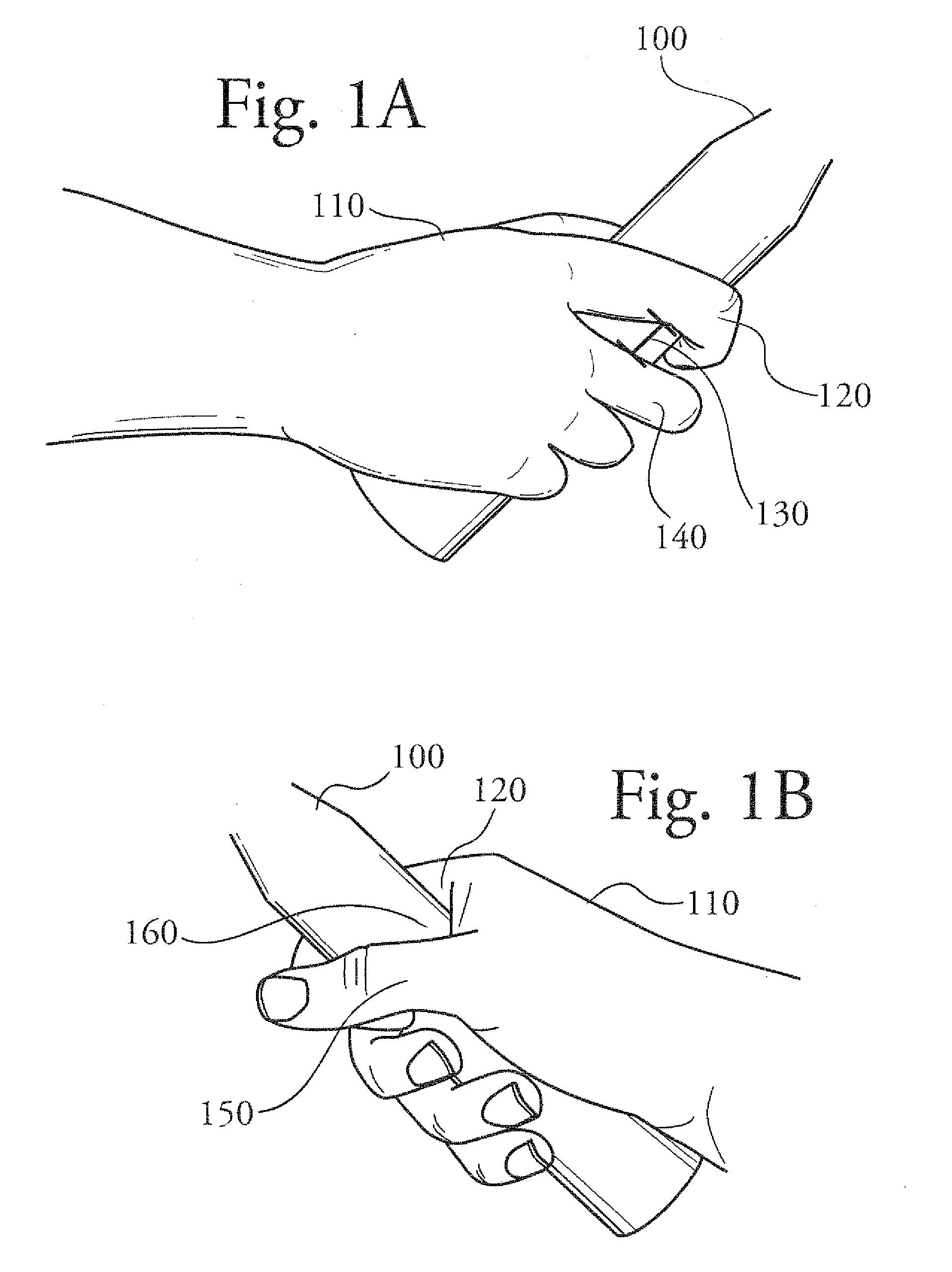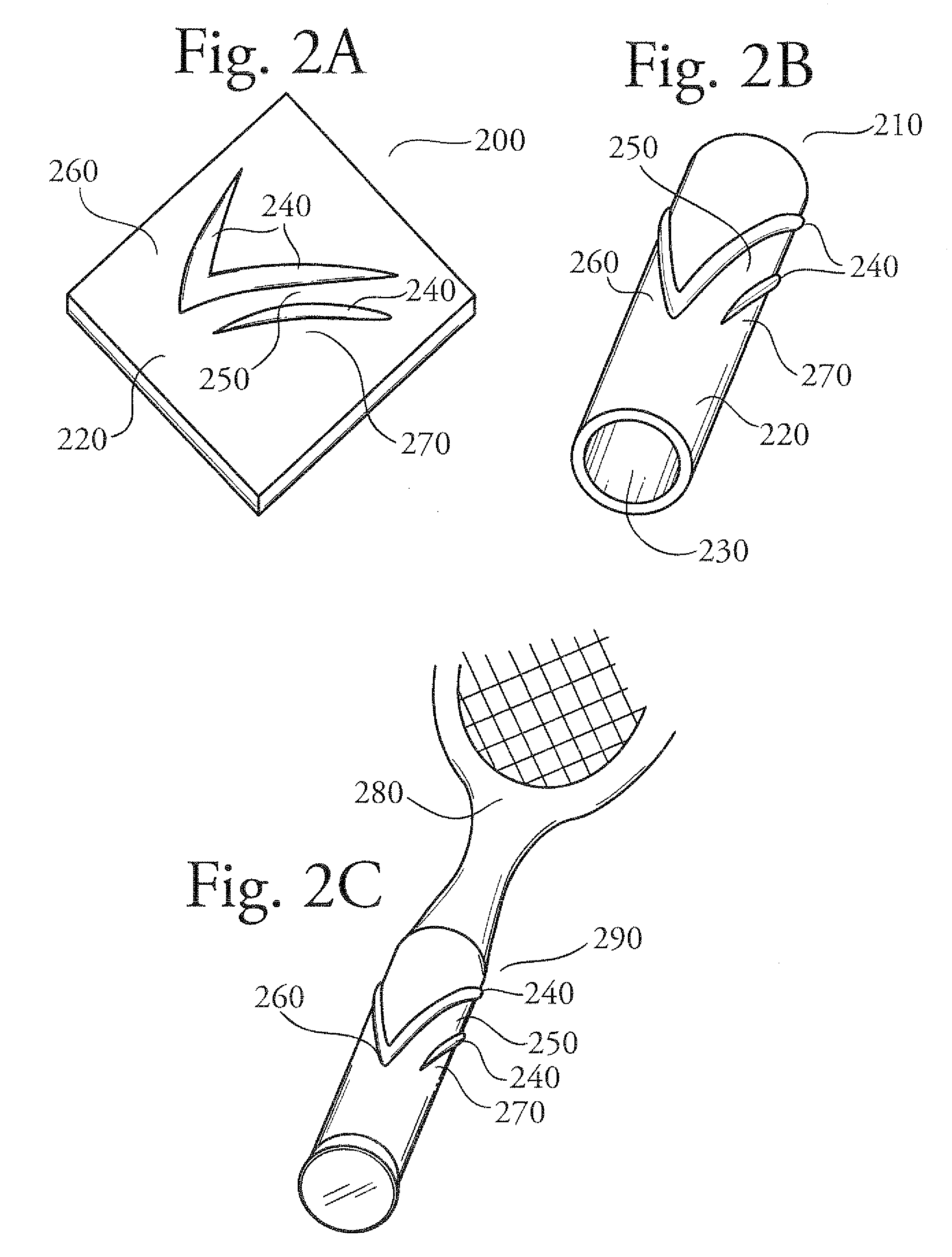Squash racquet grip and training aid
a squash racquet and grip technology, applied in the field of grip for squash racquets, can solve the problems of difficult to maintain, novice players' grip is generally counter-intuitive, and children often do not have the hand strength to maintain an open-fist grip
- Summary
- Abstract
- Description
- Claims
- Application Information
AI Technical Summary
Benefits of technology
Problems solved by technology
Method used
Image
Examples
Embodiment Construction
[0041]Referring to FIG. 1A, there is shown a first view of a proper “open-fist” grip and position of a user's hand 110 on a conventional squash racquet 100. The index or forefinger 120 of the user's hand 110 should be extended in a somewhat longitudinal direction on the racquet handle, and positioned approximately a finger's width apart 130 from middle finger 140. In use, when a user pushes on the racquet 100 in a fore-aft motion, the user will feel the racquet motion resisted by the extended forefinger 120. It will be understood by one skilled in the art that while the figures illustrate an embodiment suited for a right-handed user, the invention described herein may be adapted for use by left-handed users (not illustrated).
[0042]Referring to FIG. 1B, there is shown a second view of a proper “open-fist” grip and position of a user's hand 110 on a squash racquet 100. The forefinger 120 and thumb 150 should be positioned at an angle relative to one another to form a “V” shape 160.
[00...
PUM
 Login to View More
Login to View More Abstract
Description
Claims
Application Information
 Login to View More
Login to View More - R&D
- Intellectual Property
- Life Sciences
- Materials
- Tech Scout
- Unparalleled Data Quality
- Higher Quality Content
- 60% Fewer Hallucinations
Browse by: Latest US Patents, China's latest patents, Technical Efficacy Thesaurus, Application Domain, Technology Topic, Popular Technical Reports.
© 2025 PatSnap. All rights reserved.Legal|Privacy policy|Modern Slavery Act Transparency Statement|Sitemap|About US| Contact US: help@patsnap.com



